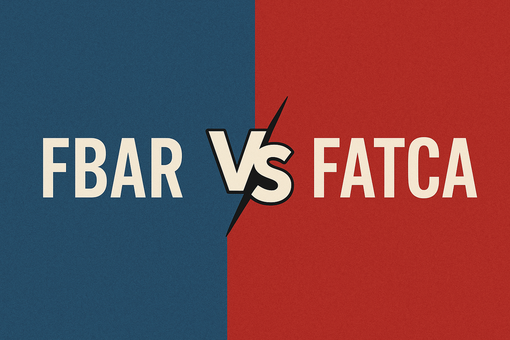IRS announces 2026 tax brackets and inflation adjustments (One Big Beautiful Bill)

The IRS released updated figures on October 9, 2025, confirming official inflation adjustments that affect income brackets, deductions, and credits for tax year 2026. Published in Rev. Proc. 2025-32, the update outlines how the One, Big, Beautiful Bill reshapes more than 60 tax thresholds and benefits.
These adjustments will guide how individuals and businesses plan their finances for the year ahead, setting new thresholds for the standard deduction, earned income credit, foreign income exclusion, and several other key provisions. They reflect the IRS’s goal of keeping tax values aligned with inflation, ensuring fairness and predictability across income levels while directly shaping how much taxpayers owe or save when filing 2026 returns in 2027.
This article is brought to you by Taxes for Expats (TFX), your trusted partner for up-to-date tax insights and practical filing support. We make it easier to understand complex updates like the 2026 tax brackets and inflation adjustments, and help you stay compliant with confidence. Learn more about our services or contact us.
What the One Big Beautiful Bill changes mean for 2026
In keeping with its goal of long-term tax simplification and relief, the One Big Beautiful Bill adjusts several core provisions for tax year 2026. These figures highlight where taxpayers and employers will see the most impact.
Standard deduction. For the 2026 filing year, the standard deduction sees a moderate rise – $32,200 for joint filers, $16,100 for single filers or those married filing separately, and $24,150 for heads of households. Under OBBB, the 2025 baseline was slightly lower: $31,500 for joint filers, $15,750 for single or separate filers, and $23,625 for heads of households.
NOTE! The marginal tax rates remain unchanged, though income thresholds have shifted upward to reflect inflation.
| Rate | Single | Married & filing jointly |
|---|---|---|
| 37% | Over $640,600 | Over $768,700 |
| 35% | Over $256,225 | Over $512,450 |
| 32% | Over $201,775 | Over $403,550 |
| 24% | Over $105,700 | Over $211,400 |
| 22% | Over $50,400 | Over $100,800 |
| 12% | Over $12,400 | Over $24,800 |
The lowest income tax rate remains at 10%, applied to single filers earning up to $12,400 or joint filers earning up to $24,800.
- Alternative minimum tax exemption amounts. The AMT thresholds for 2026 have been adjusted upward. Individuals can now claim an exemption of $90,100, which starts to phase out at $500,000 of income. For married couples filing jointly, the exemption stands at $140,200, with the phaseout beginning at $1,000,000.
- Estate tax credits. Estates of individuals who pass away in 2026 benefit from a higher federal exclusion amount – $15,000,000, up from $13,990,000 for those who died in 2025. This expanded threshold effectively shelters more estates from federal tax liability.
- Adoption credits. Families adopting in 2026 may claim up to $17,670 in qualified adoption expenses, compared with $17,280 in 2025. Up to $5,120 of that amount may be refundable for eligible taxpayers, giving families a small but meaningful financial boost.
- Employer-provided childcare tax credit. One of the standout OBBB enhancements involves support for employers. Starting in 2026, the cap on the childcare credit jumps to $500,000, with small businesses qualifying for an even higher $600,000 limit – a substantial leap from the previous $150,000 maximum.
Other affected indexed updates worth noting
Several smaller provisions have been automatically adjusted to keep pace with inflation. These updates refine the value of credits, exclusions, and account limits that many households and employers use every year.
- Earned income tax credit (EITC). The top EITC for 2026 rises to $8,231 for filers with three or more qualifying children, up from $8,046 in 2025. Revenue Procedure 2025-32 also lists updated income thresholds and phase-out levels for other household sizes.
- Qualified transportation fringe benefit. Both the monthly transit and parking limits climb to $340 for 2026 – an increase of $15 from 2025 – helping commuters offset travel expenses with pretax dollars.
- Health flexible spending arrangements (FSA). The annual elective contribution cap moves to $3,400, up $100 from the prior year. Plans that permit rollovers may now allow up to $680 in unused funds to carry forward, an increase of $20.
- Medical savings accounts (MSA). For 2026, the self-only deductible must fall between $2,900 and $4,400, with a $5,850 out-of-pocket ceiling – each slightly higher than 2025 levels. Family coverage deductibles range from $5,850 to $8,750, and the out-of-pocket limit rises to $10,700, up $200 from last year.
- Foreign earned income exclusion. Americans working abroad can exclude up to $132,900 of foreign earnings in 2026, up from $130,000 in 2025.
- Annual gift exclusion. The general per-recipient exclusion remains $19,000. However, the special limit for gifts to a non-citizen spouse increases to $194,000, up $4,000 from the 2025 figure.
Indexed items that stay the same despite inflation
While most figures see annual updates, a few core elements remain unchanged. These items hold steady by law, preserving earlier reforms made under the One Big Beautiful Bill.
Personal exemptions remain at zero for tax year 2026, continuing the rule first set by the 2017 Tax Cuts and Jobs Act and made permanent by the OBBB. The removal applies to all filers but does not affect the additional senior deduction that the Bill introduced.
Itemized deductions also stay consistent. The overall limitation – suspended from 2018 through 2025 – has now been permanently removed. However, OBBB places a ceiling on the benefit high-income taxpayers can claim, mainly those within the 37 percent bracket.
The Lifetime learning credit likewise holds its prior thresholds. Its income phaseout range still spans $80,000 to $90,000 for individuals and $160,000 to $180,000 for joint filers, unchanged since 2020.

How the 2026 IRS updates impact Americans abroad
The Internal Revenue Service’s latest adjustments matter not only to taxpayers at home but also to Americans earning and living overseas. These revisions, effective for returns filed in 2027, influence key areas like the FEIE, estate planning thresholds, and standard deductions – all crucial components for expats managing cross-border finances.
Maria – a salaried professional abroad
Maria, a single US citizen working in London, benefits directly from the higher FEIE, now $132,900 for tax year 2026 (up from $130,000 in 2025). This allows her to exclude a larger portion of her foreign income from US taxation. When combined with the slightly higher standard deduction of $16,100, her overall taxable base falls, offering moderate relief from double-tax exposure.
Daniel and Clara – married expats managing joint income
For married couples like Daniel and Clara, who file jointly from Singapore, the standard deduction now stands at $32,200, compared to $31,500 for 2025. This increase, while incremental, works alongside the unchanged marginal tax brackets to maintain predictable US liability. With these adjustments, many dual-income households abroad may see improved thresholds before entering higher tax rates.
Evelyn – an expat planning her estate
Evelyn, a retired American residing in Portugal, keeps an eye on the rising estate tax exclusion, which climbs to $15 million in 2026 from $13.99 million in 2025. The update ensures that a larger portion of her global estate remains exempt from federal estate tax, reducing the need for complex offshore structuring. For long-term residents abroad, this offers welcome stability when integrating US estate rules with foreign inheritance systems.
Also read. US expat taxes: A comprehensive guide
Practical takeaways for US expats
The 2026 tax updates continue to refine expat filing under the One Big Beautiful Bill. With higher income exclusions, larger deductions, and stable tax brackets, Americans abroad now have greater flexibility to plan and optimize their global income reporting. These revisions help simplify compliance while keeping expat taxpayers aligned with evolving IRS requirements.
Taxes for Expats can help you navigate these changes with confidence. Our specialists will review how the 2026 adjustments may affect your US expat filing strategy and show you practical ways to maximize available credits and exclusions.
It’s important to note that news items may not be updated after their release. Always verify the publication date before relying on any figure or policy language for your tax planning or filing decisions.




